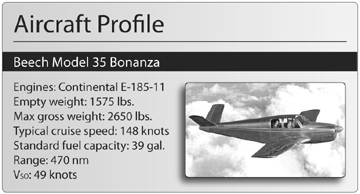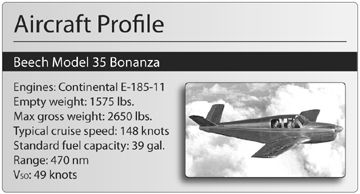By Joseph E. (Jeb) Burnside
Night flying can be one of the most enjoyable ways a pilot can exercise his or her flight privileges. The air is generally smoother, there usually is less traffic (unless youre flying near Memphis or Louisville) and any traffic will be easier to spot. Too, clear nights away from city lights afford pilots a much clearer view of the moon and stars, which always seem closer.
But night flying brings not only change, but challenge. The same dark conditions that make it easier to spot an illuminated object or aircraft can make it impossible to identify something without lights. That lack of light wreaks havoc on the human eyes ability to detect objects, literally lending motion to fixed objects, changing their color and, at even moderate altitudes, severely limiting our ability to acquire distant or dimly lit objects.
The eyes limitations can be especially insidious when we consider that we need light in the cockpit to read and understand our instruments and charts.Then, we want to minimize that illumination when trying to look outside. When we consider that the human eye can require as much as 30 minutes to become fully adapted to low-light or nighttime conditions, poorly designed cockpit lighting, bright ramp and terminal illumination, and reflections all work against pilots flying at night. Thats especially true for pilots unable or unwilling to control the aircraft by referring to instruments, and who may find themselves unable to identify a natural horizon.

The lack of available references a pilot needs to orient himself and the aircraft can be fatal. As the AOPAs Air Safety Foundation says, Humans are VFR-only creatures. The senses we use to maintain our balance and know which end is up are completely unreliable when our bodies are in motion without visual reference to the world around us. Pilots deprived of visual references while flying can quickly lose control of the aircraft and succumb to one of general aviations killers: spatial disorientation. The ASF goes on to define spatial disorientation as the mistaken perception of ones position and motion relative to the earth and notes that Any condition that deprives the pilot of natural, visual references to maintain orientation, such as…sky backgrounds with indistinct contrast (such as arctic whiteout or clear, moonless skies over water) can rapidly cause spatial disorientation.Pilots can compensate by learning to fly by reference to their instruments.
Spatial disorientation in so-called white out and black hole conditions has figured prominently in highly publicized fatal accidents, involving both personal aircraft and Transport-category jets.
Background
On September 29, 2003, at approximately 0530 Mountain time, a Beech 35 Bonanza was destroyed when it impacted the ground shortly after takeoff. The accident site was 1.5 miles southwest of the departure point, the Alexander Municipal Airport in Belen, N.M. The non-Instrument-rated Commercial pilot, the airplanes sole occupant, was fatally injured. Night visual conditions prevailed.
The NTSB used the airplanes GPS navigator to determine the pilot initiated his takeoff roll from Runway 21 at 5:28:53. At 5:30:03, the pilot initiated a right turn and, according to the retrieved data, the airplanes speed increased from 93 mph at the start of the turn to 151 mph at the time of impact.
The pilot turned 113 degrees in 22 seconds with a rate of turn calculated to be five degrees per second, indicating a relatively steep bank; a standard-rate turn is three degrees per second. Albuquerque Air Route Traffic Control Center (ARTCC) radar data indicates that the airplane climbed to approximately 300 feet agl. But thats as much altitude as it got.
The airplane was found almost 12 hours later by an individual driving on a nearby road.
Weather conditions at the nearby Albuquerque International Airport at the time of the accident included wind from 130 degrees at seven knots; visibility 10 statute miles and scattered clouds at 10,000 feet agl. The moon was at 18-percent visible disk and had set the day before the accident at 2126. The sunrise on the day of the accident was at 0700, approximately 90 minutes before the accident.
The departure airport is a non-towered facility with a single runway oriented 030-210 degrees and equipped with pilot-controlled lights; there are no approach lights. The airport is located three miles west of the city of Belen. To the south, west and north of the airport, it is minimally populated and there are very few lights at night.
Investigation
The impact site was approximately 4822 feet west of the departure end of Runway 21. The initial ground scar contained part of the right wing tip fuel tank; the wreckage debris field extended for 537 feet and was on a 330-degree heading.
All of the airplanes major components were accounted for at the accident site. The right wing was broken from the fuselage at its root, and remained connected only by its control cables. The wings inboard 40 percent was bent up approximately 75 degrees, and the remaining outboard section was separated and oriented downward approximately 75 degrees. The left wing remained attached to the fuselage, but its outer 60 percent was bent up approximately 40 degrees and bent aft. The landing gear was in the retracted position, as were the flaps. The cockpit and instrument panel were severely damaged with few readable components.
No pre-impact engine or airframe anomalies, which might have affected the airplanes performance, were identified.
Similarly, the NTSB could find no evidence of physical incapacitation or impairment of the pilot that would have caused the accident.
Probable Cause
The National Transportation Safety Board determined the probable cause of this accident to be the pilots failure to maintain aircraft control immediately after takeoff due to spatial disorientation. A factor was the dark night light conditions.
Thats a succinct, polite way to say the pilot flew the airplane into the ground because he couldnt fly it by reference to the panel-mounted instruments.
Spatial disorientation is a well-recognized and -understood phenomenon.Yet pilots continue to bend sheet metal because of it. For example, in the final report on John F. Kennedy, Jr.s crash-the probable cause of which was attributed to spatial disorientation-the NTSB noted that FAA Advisory Circular (AC) 61-27C, Instrument Flying: Coping with Illusions in Flight, states that illusions or false impressions occur when information provided by sensory organs is misinterpreted or inadequate and that many illusions in flight could be caused by complex motions and certain visual scenes encountered under adverse weather conditions and at night.
The NTSB notes that another AC, 60-4A, Pilots Spatial Disorientation, states that tests conducted with qualified Instrument pilots indicated that it can take as long as 35 seconds to establish full control by instruments after a loss of visual reference of the earths surface.
The pilot in this accident flew for longer than that. But not very much longer.
Also With This Article
“The Pitch-Up Illusion”




